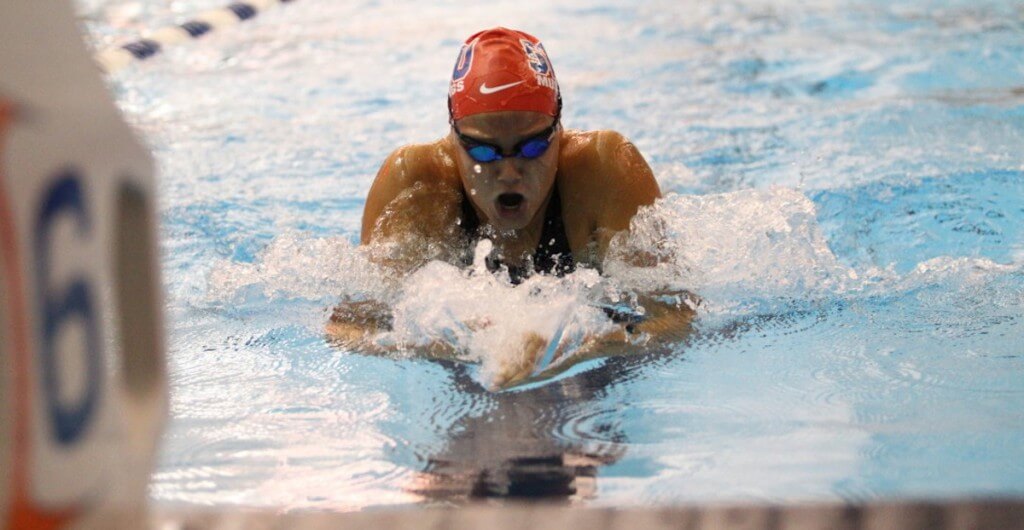Do Fast Times in October Forebode Fast Times At NCAAs?

By Lander Eicholzer, Swimming World College Intern.
The SMU Classic has historically been known to produce fast swimming performances. It is often the first major invite of the college season and is sure to turn out exceptionally fast times when top end talent is brought together. The 2016 edition of the event was no exception.
Louisville middle distance star Mallory Comerford had a huge meet, continuing the momentum from her summer with several lifetime bests. Swedish Olympian and USC freshman, Louise Hansson, proved she’s going to be a force for the Trojans as she won the 200 free and 200 IM events.
Some in the swimming community may write off these fast early-season performances and wonder if these women will be able to deliver come March. This begs the question: what is the historical precedent for swimming well at the SMU Classic and being able to replicate similar results at the end of the college season?
The biggest takeaway from the 2016 meet is that Comerford is a beast (in all the best ways), and should be counted on as the Cardinal seek to replace their graduated ace, Kelsi Worrell. Comerford won the 200 free last year at SMU in 1:45.19 before taking second at the NCAA Championships in 1:42.54. Her 1:43.1 at the October SMU Classic is a strong indicator of more record-breaking swims this season, despite conceding the event to Hannson on a touch-out.
In 2014, Hannah Weiss was a sophomore at USC, producing a 52.95 in the 100 backstroke at SMU. Weiss later swam 51.60 to win the B final at NCAAs. While she did manage a 51.92 100 backstroke in a dual meet against UCLA that year, Weiss was by no means hurt by starting off her year with a time that was high in national rankings.
Similarly, at the 2013 SMU Classic, Indiana senior Lindsay Vrooman laid down a 4:38.11 in the 500 freestyle. Vrooman would produce her lifetime best in the event 4:35:41 at the BIG 10s before adding time at the NCAA Championships in Indianapolis, posting a 4:36.31, an improvement of only .32 percent. Still, her 4:35.41 marked an improvement of .97 percent on the season.
Since the 2013 edition of this event, and with few exceptions, swimmers have consistently improved from their swims at SMU to their respective conference meet or NCAAs. For example, in 2013, Rachel Nicol’s 200 breaststroke was the only winner from the SMU Classic to swim slower at both her conference meet and NCAAs.
Pinning swims as “good for October” devalues the place meets like this may have in teams season training plan. If these swims provide a boost of confidence to athletes for the season or free up conference meet lineups, they should be taken seriously as a precedent for the rest of the nation to follow.
The difference here is purely ideological. Some programs build their swimmers up for monster tapers while others prefer to have their athletes racing at a high level consistently throughout the year. There is no purely “right” or “wrong” training approach, and many swimming traditionalists seem to have forgotten this truth. Timeliness of results does matter, but it should not come at the expense of discouraging worthwhile racing and competition.
In recent years, more “traditional” training has shifted to lose its edge with many coaches and fans alike. More high intensity, low yardage training has become the trend and part of the normative swimming culture. While a swimmer like Michael Andrew may be an extreme example of this approach, there are lessons to be learned from his style. Fast swimming produces excitement among spectators and draws attention to the sport. The spirit of swimming should be to innovate.
All commentaries are the opinion of the author and do not necessarily reflect the views of Swimming World Magazine nor its staff.




This is an interesting issue, but your article really doesn’t analyze the question of whether fast times in October mean fast times in March. Instead, you are just pointing out a few anecdotes. If you wanted to analyze this issue, you would want to do something like (a) figure out how many swimmers make NCAA A cuts in October, (b) see how they did in March and, perhaps, (c) compare that in some manner to how fast the other point earning swimmers at NCAAs swam in October.
I suspect that it would be really difficult to reach any definitive conclusions because there are a lot of variables involved, such as whether a particular swimmer is swimming fast in October because they are rested or are swimming fast because they are just really fast. Good idea to look into this.